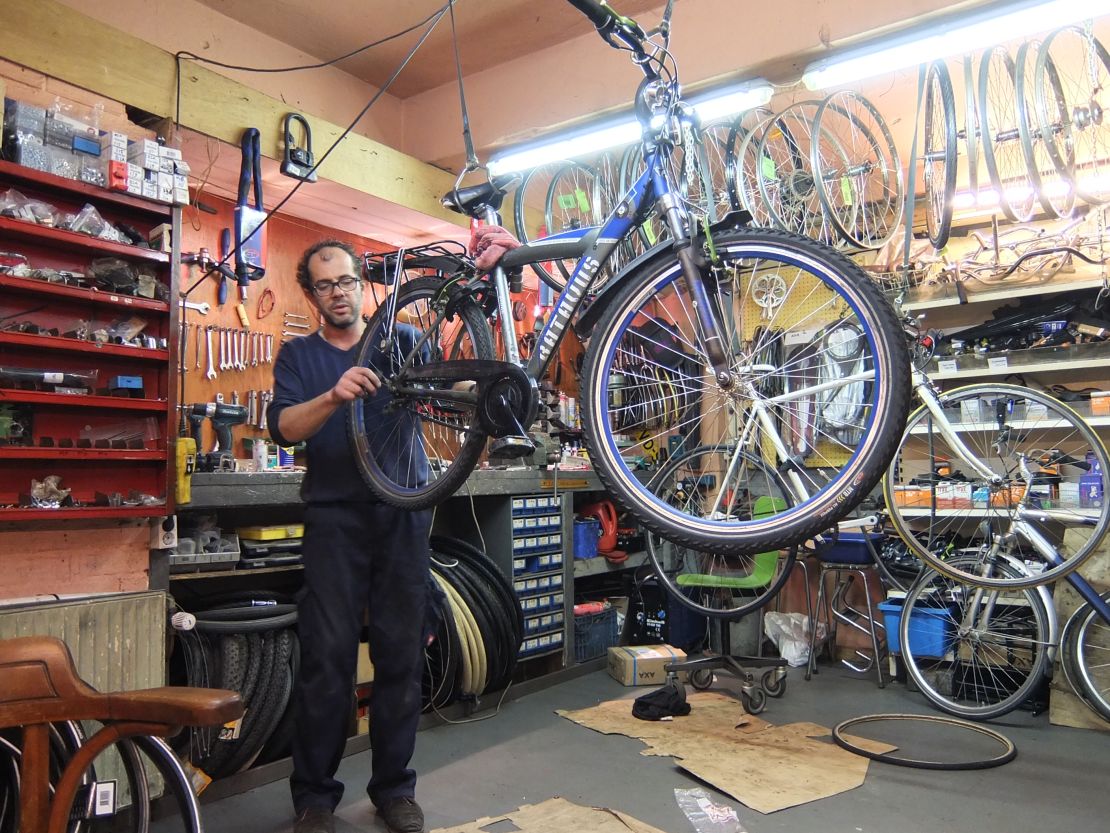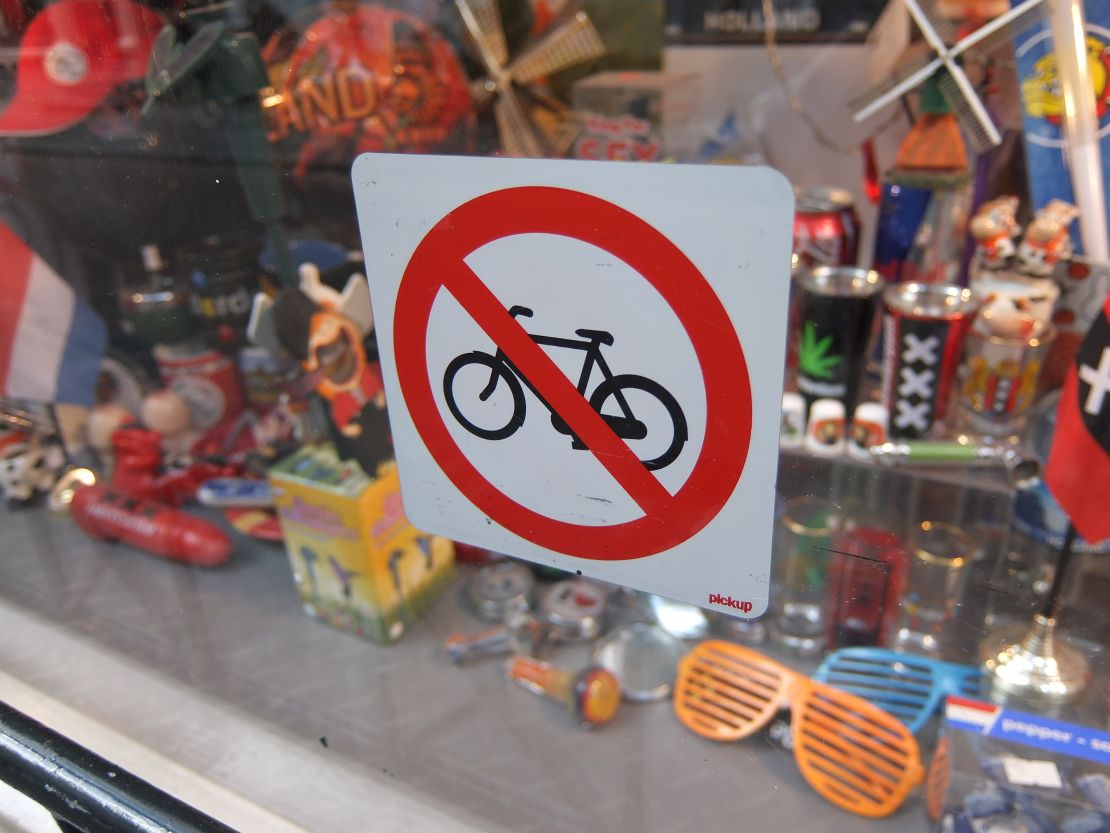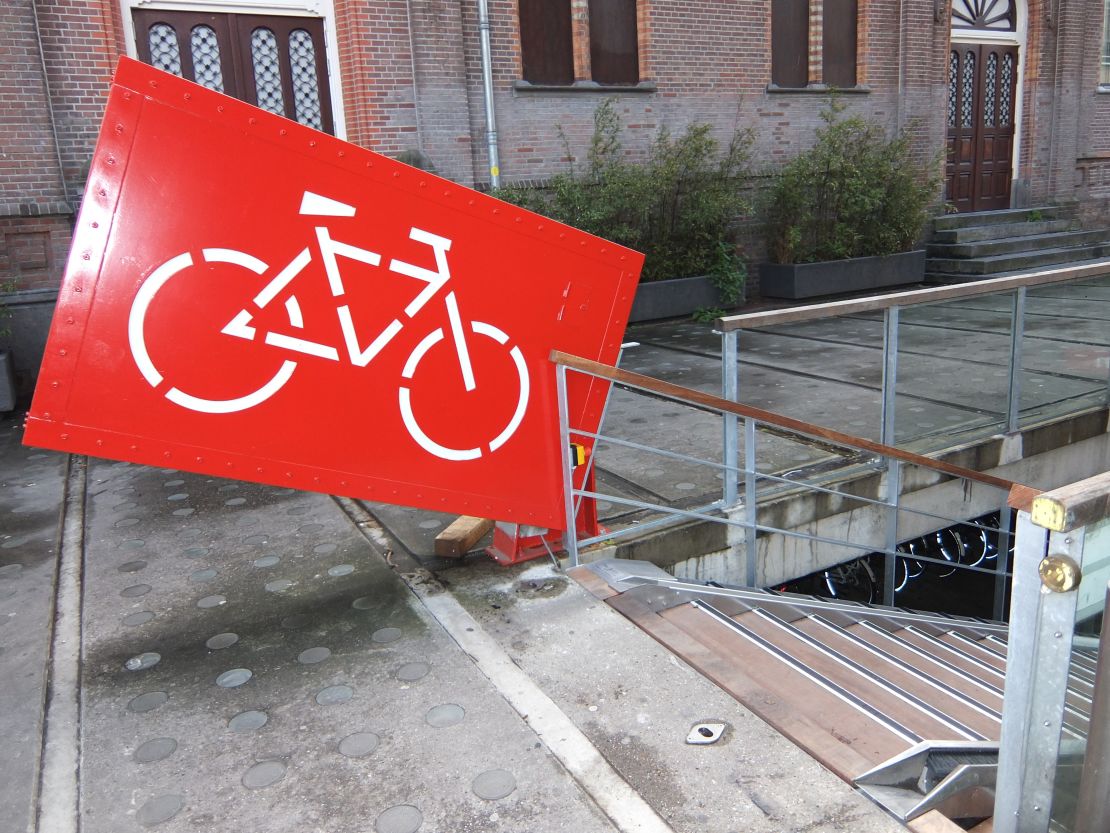Editor’s Note: This piece, and several others on Amsterdam, complement the CNNGo TV series. This month’s show gets an Olympian’s tour of the city’s markets and park and visits an unusual photography exhibition. It then explores the world of Amsterdam street food and takes in the city’s best picture spots with an Instagram pro. More on Amsterdam plus the full show can be found here: www.cnn.com/cnngo
Story highlights
Amsterdam is pancake flat and crisscrossed with 4,000 kilometers of bike paths
Local cyclists are said to get frustrated with tourists who dawdle or stop in the center of cycle paths
Bike theft is a problem with an estimated 55,000 cycles going missing every year
Amsterdam should be a cyclist’s dream.
It’s pancake flat, it’s riddled with cycle tracks and almost everyone gets around on two wheels.
There are so many bikes it looks like – hard though this may be to imagine – the Tour de France for normal riders.
In reality, it’s a nightmare, or at least it is until you grasp the rules of the road – and then it’s a blast.
Within seven minutes of taking possession of my Dutch rental bike, a motor scooter nearly rams me into a canal.
By the time my first hour is up, I’ve been verbally abused for halting abruptly in a cycle lane, and been loudly tooted at by a tram after getting my tires stuck in its tracks.
I’m not the only one.
All around Amsterdam hapless bike-borne visitors can be seen wobbling into the paths of furious Dutch cyclists.
“Tourists think they’re in Disneyworld,” says Geert Gelissen, who runs FietsConsult, a side-street cycle hire and repair shop in the Dutch capital. “And Dutch people think they’re God on a bicycle.
“It’s a problem. As soon as summer starts, I sell more of these things than anything else,” he adds, brandishing an enormous brass bike bell the size of a clenched fist.
“Customers come into my shop and scream ‘arrrrgghh!’”
With more rental bike shops opening every year, the problem could get worse – unless, of course, tourists grasp the essentials of riding in Amsterdam.

It’s not hard though.
Here’s what I picked up.
MORE: Extraordinary new play brings Anne Frank’s secret world to life
Ride it like you stole it
Pedal slowly while gawping at tulips, or stop to check your map, and pretty soon all of Amsterdam will hate you.
“When we’re on bikes, Dutch people are always in a hurry, even when they’re not in a hurry,” says Guy Collot d’Esury, another Amsterdam bike mechanic.
“You don’t have to ride like us, but if you can’t, just stay out of our way and you’ll be fine.”
But make sure someone else doesn’t steal it
“If it isn’t locked to Earth, then expect it to go,” says Samantha Shaffer, an economics major from Washington, D.C., whose year-long studies in Amsterdam have literally and figuratively included a crash course in Dutch cycling.
An estimated 55,000 bikes go missing annually in the city, fueling rumors of gangs targeting them to smuggle to Eastern Europe.
“People are afraid to buy brand new bikes, so they get some old thing for 100 euros ($136),” says Gelissen. “But if you lock it to something secure the chances are better.”
Be careful where you lock it though.
Amsterdam authorities have begun removing bikes locked outside of extensive designated cycle parks on canals and at the central station.
It’s a long walk to the pound on the outskirts of town to get it back.
MORE: Wurlitzer wizards bring the music back to Amsterdam’s art deco marvel
Try not to look like a tourist

Using one of the major rental companies gives the advantage of a citywide support network, but it also saddles customers with a brightly colored bike.
Less cycle-related abuse is attracted from locals if the ride doesn’t shout “I’m a tourist.”
I rented mine from Black Bikes, which offers “classic” Dutch machines that blend in seamlessly with the crowds riding indestructible, gearless step-through bikes.
There are plenty of other low key rental shops, and while the quality may not match that offered by the big chains, that’s not necessarily a problem.
“Having a bike that makes noises is a good thing,” says Shaffer. “People can hear you coming and get out of your way.”
Expect the worst
More advice from Shaffer: “If you go with the expectation that you’re probably going to die on your bike – anything less than that, you should be happy.”
She’s joking, but after my run-in with the scooter and tram, it’s advice that rings truer than one of Gelissen’s giant bells.
Some Dutch cyclists seem to invite the worst.
I saw one man riding along a canal-side road while using both hands to operate his iPad.
I saw another man riding undeterred by the fact he was carrying crutches and had one foot in plaster – perhaps from an earlier cycle accident.
The good news is, according to Dutch cycling organization Fietersbond, Amsterdam and the Netherlands have one of the lowest rates of serious cycling accidents in the world.
MORE: CNNGo in Amsterdam: Windmill beer, tulip vases and picnics in the park
Cycle sober

After a day dodging tram rails or being railed at by impatient locals, it’s tempting to park the wheels outside a canal-side pub to sink a few foam-topped Dutch beers before setting off again.
That’s probably the fastest route to the bottom of the Prinsengracht Canal.
Amsterdam might have a liberal outlook on most things, but cycling under the influence of alcohol or whatever else is on offer isn’t legal – unless you’re on the beer bike, a pedal-powered mobile bar.
That’s not to say it doesn’t happen.
“If you’re out after dark, assume everyone on a bike is drunk,” jokes Shaffer.
Stick to the cycle paths
Amsterdam might resemble a cyclists’ free-for-all, with bikes zipping into every available space, but there are rules and cycling isn’t permitted everywhere.
Sticking to the city’s 4,000 or so kilometers (2,480 miles) of designated cycle path will ensure safety – as long as other cyclists remain patient – and get you there far faster.
When no way is marked by a cycle symbol, then it’s possible to mingle with traffic.
The city does have pedestrian zones, though, so sometimes it’s best to get off and walk.
MORE: Insider Guide: Best of Amsterdam
Give your bike a name
This is somewhat random parting advice from Shaffer, particularly as her gold-sprayed bone-rattler doesn’t have a name, until we both agree it should probably be called Melvin.
“If you name your bike, you become one with the bike,” she adds, sagely.
And then if you wind up in a canal, at least you’re not alone.
Got any more good tips for cycling in Amsterdam? Let us know in the comments
Barry Neild is a freelance journalist based in London. He’s a longtime contributor to CNN and other major international news organizations.













